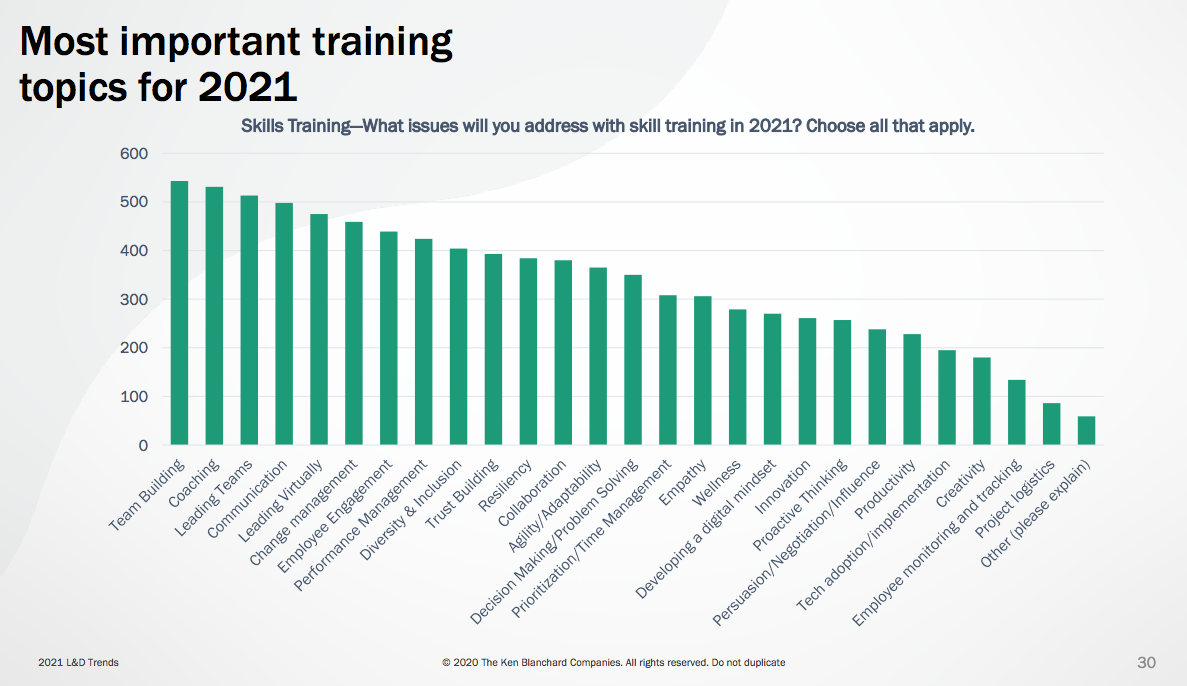What is the most important HR training topic for 2021?
If you are an HR Leader or CAO, how will you invest your Learning and Development budget to get the maximum benefit for your team? Read on to see how over 1000 HR and L/D professionals answered this question. Their answers may surprise you.

These topics are crucial to the well being of organizations and their staff. There is an underlying challenge that many HR professionals face. This is, in part, due to the challenges presented by COVID-19 and the various restrictions and changes brought about by the pandemic.
The Blanchard survey found a number of themes emerging among HR Professionals. These are:
- Successfully making the shift to virtual and online learning
- Helping a workforce struggling emotionally with implications of COVID-19 and working remotely
- Concerns about their L&D jobs
Do you agree with these, and the ranking order?
In many ways, these challenges can create a ‘Perfect Storm”. Many organizations were unprepared to make the shift to online learning, and as a result, the effectiveness of this mode of Learning and Development is suspect. In fact, the respondents indicated that while 53% of their training is now done virtually, many felt that it was less effective than in-person training.
How do you feel about the effectiveness of your transition to online training?
Given the constraints and challenges many smaller Municipal HR Departments face, it raises the question of how to effectively provide the training necessary. Many HR Departments are already facing the challenge of providing basic training, without the added challenge of having to pivot this online. Over 60% of the respondents said that a lack of the resources, and proficiency in developing eLearning resources, would be major constraints.
How will you pivot your training, and ensure that you continue to provide the best results?
One solution is to look to support professionals who have the training material and are equipped to provide high-quality online resources to help meet your targets for 2021.
If you would like more information, feel free to contact me to see how we can help you deliver top-quality training during this challenging season.
Email me at [email protected]

*Statistics and other information taken from The Ken Blanchard Company’s Report 2021 Trends: Learning and Development in a COVID World















